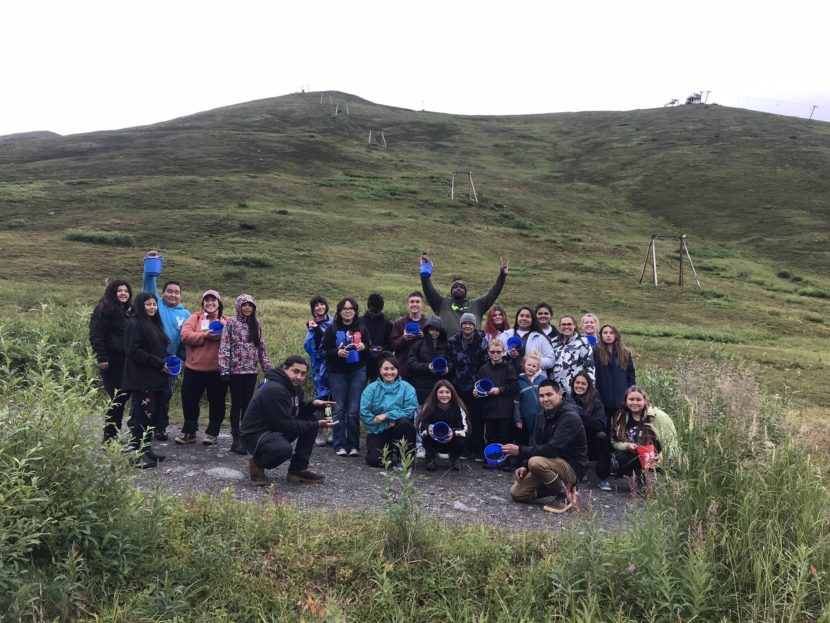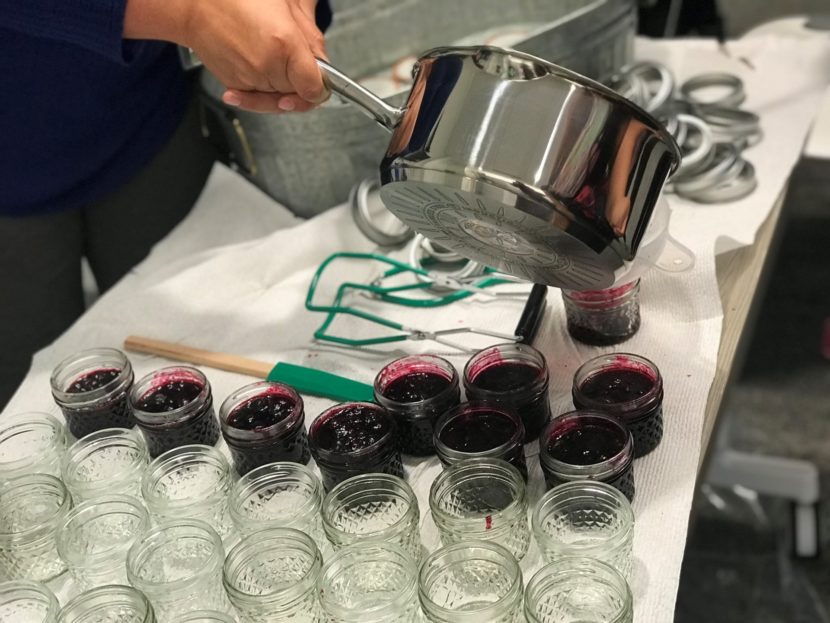
This summer, Cook Inlet Tribal Council took young people out berry picking as part of their addiction prevention programming.
CITC is a tribal nonprofit that calls itself a “culturally-responsive social service organization.” Dr. Angela Michaud is the organization’s senior director of recovery services.
“With our wild blueberries, we didn’t get enough to make [the jam] for the 50 people that were in the room,” she said. “So we went over to Costco and got some blueberries and mixed it in with the wild blueberries and made our jam that way.”
She said adapting village traditions to a city like Anchorage helps youth tap into their culture to improve their health outcomes and decrease rates of addiction.
“Anchorage is a huge village,” Michaud said. “It is [about] getting out there and having that feeling of connection.”

Prevention through youth engagement
CITC has found through surveys that participants are consistently not using substances when they’re doing cultural activities.
“That’s a five-hour period of time that they can say ‘I didn’t drink, use alcohol or drugs,’ and that they were happy,” Michaud said.
With these promising outcomes, CITC is using two new federal grants to put Alaska Native cultural education at the forefront of its addiction prevention programs.
“What we do is we implement culture for healing [to] prevent tobacco, alcohol, substance use and suicide,” Michaud said.
With some of the money, they’re able to run monthly cultural events targeting Alaska Native youth and their family members.
Chris Delgado is from an Inupiaq family and serves as the prevention supervisor, running these activities for CITC. He grew up in Anchorage.
“I missed some of the cultural activities being raised,” Delgado said. “It’s going to be slowly forgotten if we don’t stop and do something about it. As long as we can engage the youth, then I think we’re in good shape.”
CITC’s prevention activities include more conventional trainings, like how to use the opioid overdose-reversing drug naloxone. But it also offers dance lessons, carving walrus ivory, berry picking, traditional story-telling, ice fishing and fishing with hooligan nets.

These programs aim to boost Native youths’ confidence and teach life skills that the participants can learn and share, Michaud said.
A case for connectedness
A recent paper published in a leading medical journal outlined that adolescents who feel more connected to their community, their peers and their families have up to 66% less risk of substance use.
Robert Blum from Johns Hopkins University is an expert on adolescent health and the primary author on the paper. He emphasized that studies have long shown that conventional, information-based addiction prevention strategies for youth have no effect on young people – and sometimes even have negative effects. He advocates for treating “young people as resources, rather than problems.”
CITC has a program that utilizes young people in long term recovery as a resource, hiring them to help teach their peers.
“They’re able to share with others what their experiences were to help them be successful in the program,” Michaud said.
Small details, like offering food options that are part of traditional Native diets, brings these peer communities together.
“People started getting used to eating the salmon, and then this year we were finally able to get them out there to be able to fish for it,” she said. “And they got their own fish and brought it back. It’s just the excitement and the stories that came out of it.”
As a result of this program, she cites a decrease in recidivism rates and an increase in participants completing the program and securing jobs and housing.
“We don’t want to just survive,” Michaud said. “We thrive [when] we brought this stuff to the table. We were overcoming our adversities, and that has a different feeling to it.”
A flipped model
Michaud says that many prevention programs take a Western medicine curriculum and just add Native words to them. But the CITC team has built its entire curriculum on culture. She says the Western models are secondary.
“You’re teaching them how to connect with nature and getting people outside—away from distractions, drugs, alcohol and abuses,” Michaud said.
And these events aren’t just one-off get-togethers. Many youth participants join one event and then continue to sign up for others, even getting involved in other programs CITC offers to bolster employment and high school graduation rates.
One group gathered seeds and planted them in a community garden. Once ripe, the food went to the Alaska Native Health Center so patients could eat traditional foods.
“And how that relates with our culture is we’ve had so many traumas in the past two, three generations that a lot of the culture has been taken away,” Michaud said.
She says Indigenous and Alaska Native people led healthy lifestyles for thousands of years, and only in the last few hundred years have had these health issues related to addiction.
“We were okay and then we weren’t,” she said. “And now we just go back to what we know and we’re okay.”